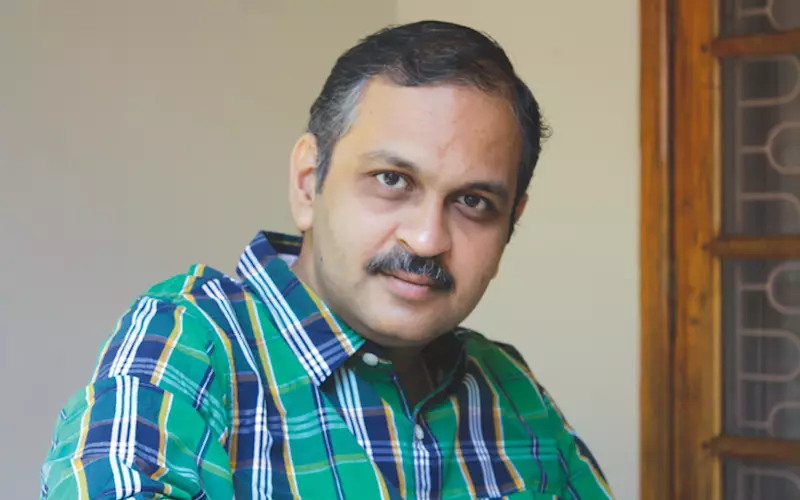Raju N Kutty: We have to be at the cutting edge of the technology
Raju N Kutty of Purandara Laser Technologies attended the Power Lunch at the MMS Roundtable (third edition). He belonged to the group, Luxury Packaging - innovative. Kutty spoke to the PrintWeek India team about innovation.
07 Mar 2019 | By PrintWeek India
Are we moving too slowly - as compared to the other industries?
It depends on the industry that we are comparing to. For example, if you compare the printing industry with the automobile industry, we are going a bit slow. I understand that companies like Volkswagen are working seriously on self-driving cars, also electric and hybrid engine technologies are expected to make huge changes. Whereas, in the world of print we are seeing slow and steady changes in the technologies being used.
What should a modern press look like?
I would like to answer this question as a die-maker. A modern press according to me is more of a product creator rather than a printer. Post-press would be the real production process and printing would be only one of the processes, amongst many others. From our perspective, we are working on a few improvements which will help improve the efficiency of our toolroom.
Do you have to be much more innovative than your counterparts of a similar scale? How do you cope with that, constantly learning new innovations?
We have to be at the cutting edge of technology. In the die business, precision and durability of the dies are of utmost importance. We also need to keep learning the new techniques of tooling that ensure that we are not left behind. Visiting other companies, trade shows, the internet helps us to keep abreast of new ways of doing things.
What is the most innovative skillset you’ve had to develop in your team? Print or business and management?
In our case it is definitely business and management. We put in lot of efforts to ensure our team is always on their toes. They always need to engage with the customers since die business is risky and the smallest error in a die can result in disaster for a print job.
In terms of creating innovation, do you invest in R&D in your organisation or you follow industry trends?
We follow industry trends. India is a few years behind in terms of tooling and technology of die making. There is a lot of ground for us to cover, compared to a similar manufacturer in China.
What drives innovation? Is it necessity or technology? It is a combination of both.
Depends on the scenario.
Almost all print companies have diversified into new markets or applications – what is the key to that? How are you spotting opportunities?
Keeping engaged with the customers is how you identify new opportunities and applications. Customers can teach you many things.
How do you measure creative success within your organisation? Is there an innovation index?
We do not have an innovative index and creative success is often dictated by the needs of the client.
What about automation? Is automation an area that manufacturers can help in?
In the business of dies, there is a lot of automation already. Lasers, CNC rule processing equipment, CNC machines have taken over most of the manufacturing involved. More R&D is going on at the manufacturer's end to fine tune the tooling and take care of various pain points of die assembly. This is a welcome scenario and we see more of this happening as rule processors and lasers keep getting better and more efficient.
What are the key challenges facing your vertical in the industry?
One big challenge is the huge working capital requirement. Challenge can be dealt only if only the printers pay faster.
The culture of print businesses 20 years ago is very different from what it is now. How do we make print more attractive?
By embellishments. There are plenty more options today to add ‘bells and whistles’ to your print product.
One innovation in our industry you hope to see in 2030?
I do wish something comes up to replace the huge quantity of wood being used to make dies. Some 3D printing possibility perhaps.











 See All
See All